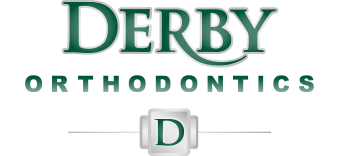Early “Phase One” Treatment
The American Association of Orthodontists (AAO) recommends that all children be seen by an orthodontist no later than age 7. This is not necessarily to start treatment, but to evaluate the need for intervention by looking at jaw growth or the lack of room for permanent teeth. An orthodontist can carefully monitor growth and development and begin treatment when it is ideal. Please don’t wait until all the baby teeth are lost. There are great advantages to starting treatment early.
Orthodontic treatment can be initiated on certain types of tooth problems before all the permanent teeth have erupted. Phase I (Early) Treatment usually begins after the four upper front teeth have erupted (around ages 7-9).
Below is a list of some indications for early orthodontic treatment :
- narrow upper jaw
- misaligned upper and lower jaw
- inadequate room for permanent teeth to erupt
- finger/thumb habits
- extra or missing teeth
- hygiene concerns due to tooth position
Early Treatment or Phase I Treatment (First Phase)
This phase of treatment is for the orthopedic correction of the jaws and alignment of the front teeth to facilitate in the eruption of the remaining permanent teeth. Appliances are sometimes placed on the upper and/or lower permanent teeth. The patient may wear space maintainers or expanders, which bring the teeth into a more ideal biting position. Phase I treatment can be used to enhance growth pattern in children to help create more room for the eruption of permanent teeth. Treatment typically lasts with a “holding” pattern between Phase I and Phase II. Phase II treatment completes the orthodontic process by aligning the remaining permanent teeth that erupted after Phase I was complete.
Advantages of Early Treatment
- Improves the relationship of the upper and lower jaws.
- Utilizes the maximum advantage of the child’s growth.
- The bone is more pliable and teeth move more easily.
- Moves protruding teeth back so that they will be less susceptible to injury.
- Improves facial appearance and self-esteem.
- Patient is cooperative and enthusiastic at this age.
- Helps reduce chance of removing permanent teeth later.
- Reduce length of time wearing full braces.
Phase II Treatment (Second Phase)
- During the first phase, we have no control over the unerupted permanent teeth. After these teeth have erupted, somewhere between 11-14 years of age, Phase II treatment should begin. Sometimes it requires only simple alignment.
- Phase II treatment typically begins when all or most permanent teeth have erupted. During this phase, full bite correction and alignment of all teeth is achieved.




